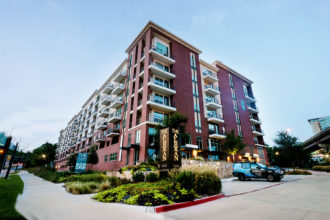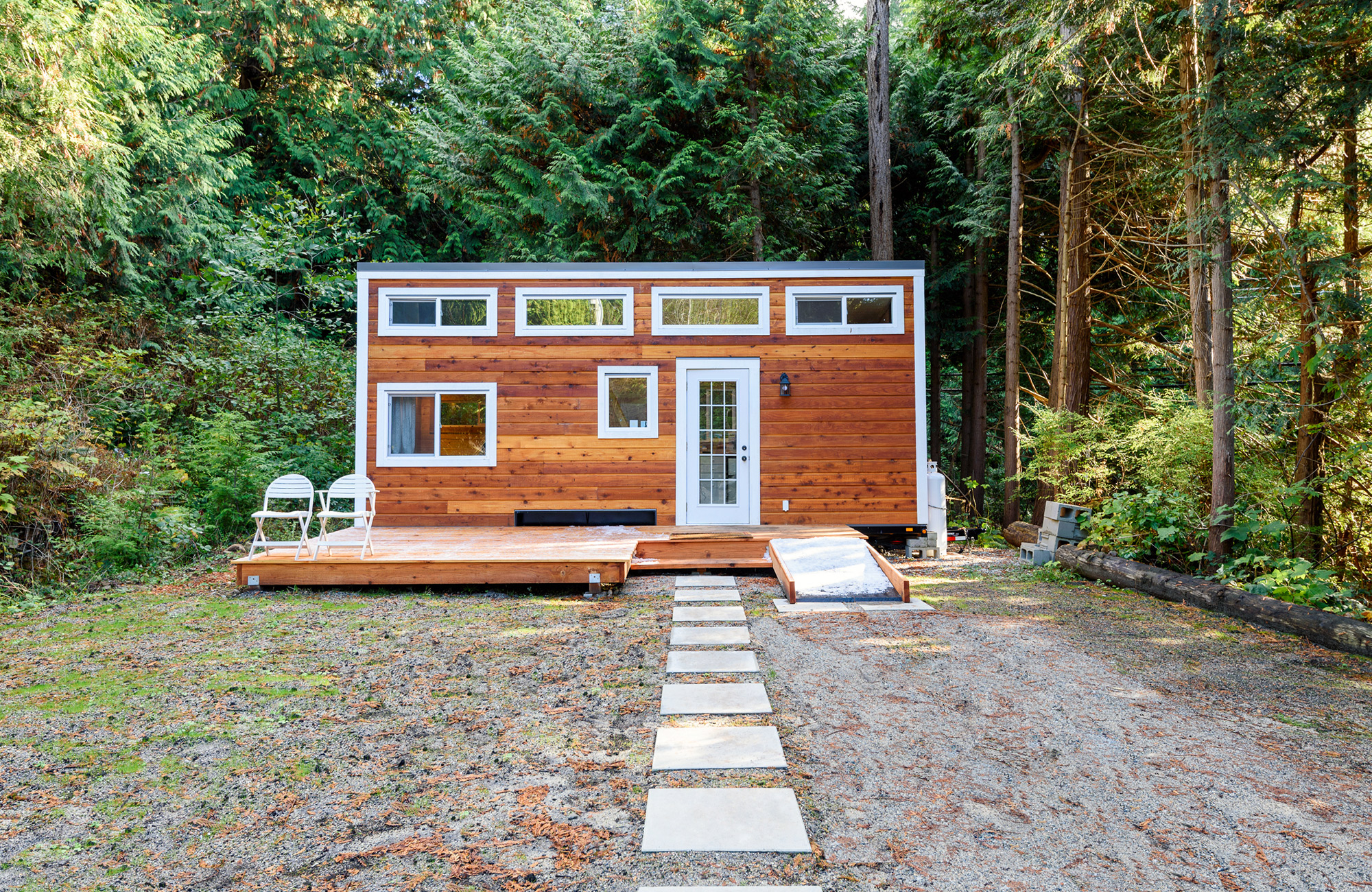After a nearly unanimous City Council vote Wednesday night, Dallas homeowners now have a way to legally rent out small apartments housed on their property. These so-called “Granny flats” have the potential to help the city address its affordability problem, particularly in neighborhoods where middle-income housing is being demolished to make way for high-priced apartments.
This finally successful salvo began in 2015, but the topic’s history is illuminating.
Properly called an Accessory Dwelling Unit (ADU), these dwellings have been around well before Dallas’ first 1929 code mentioned them. From 1929 to 1945, residential lots allowed for either one or two dwellings. Post World War II, the code was changed to specify the secondary unit in any new development could only be “bona fide servant’s quarters not for rent.” By the 1970s an owner also needed Board of Adjustment approval. In the late 1980s, the last time the subject was amended, not only did you need BDA approval, but you had to deed restrict your property to prevent the secondary unit from being rented.
Surveying 13 surrounding municipalities, all except Allen allowed the secondary unit, but mimicking Dallas, none allowed them to be rented. Further information was gathered from an additional 14 cities in the U.S. and Canada. Eleven allowed these secondary units to be rented with some type of additional and thoughtful requirements (cribbed for Dallas’ ordinance, which will be discussed later).
More racism?
Essentially, from the mid-1940s to the present, the message was to allow construction, but not monetization of the secondary unit. Since northern Dallas drove the political bus on this issue (the use of “servant’s quarters” tells you that), the question is why wouldn’t prosperous North Dallas want these units to be used for anything but servants? If it was an infrastructure burdening issue (that some still espouse), wouldn’t servants also be drinking water, flushing toilets, and driving on roads?
Northerners didn’t need the money, but more importantly, it was a way to keep the less-moneyed out of both a primary and secondary dwelling. Out of the neighborhood. Out of the schools. Well, now the tables have turned. Many parts of previously affordable northern Dallas aren’t affordable anymore. Those owners don’t want to move and new buyers can’t swing the mortgage without the rental income from the secondary unit. According to measurements from the city’s Comprehensive Housing Policy, 31 percent of homeowners are cost burdened.
If this was just an argument for facilitating people’s ability to live in homes that are too expensive for them, I would be less sympathetic. I’m a big proponent of living within your means (I don’t have to issue bonds to pay my bills).

But Dallas is also facing an affordability crisis. Block after block of once affordable homes, condominiums, and apartments are flattened to make way for overpriced apartments. If some of those displaced residents can rent a Granny flat to stay in their neighborhood, close to their job and social infrastructure, good. If that situation also benefits those homeowners whose monthly outlay and tax burden haven’t kept pace with their wages. It’s a happy win-win.
Getting a personal ADU
First, a reminder. The new ordinance doesn’t enable construction per se. It enables a homeowner to seek approval to rent a secondary dwelling that they’re already able to build, but not rent.
The ordinance provides two roads to gaining approval to rent the secondary unit. An individual owner can file a special exemption with the Board of Adjustment (BDA) to rent that unit. If your property doesn’t have a non-rentable one, you’ll then need to build one (and go through that process).
The BDA judges whether the added unit will “adversely affect neighboring properties.” Units can either be attached or detached from the main dwelling (e.g. above an attached garage). They also require a deed restriction that the property owner has to live in one of the dwelling units (so yes, you could live in the smaller unit and rent out the big house). The BDA also looks at whether there is enough parking and requires annual registration of the rental unit with the Single Family Non-Owner Occupied Rental Program (SFNOORP for short … ha!).
Finally, an owner can’t sell the resulting two units separately, but can bring in separately metered utilities.
The size of a secondary unit isn’t grand. The minimum is 200 square feet. The maximum is the larger of either 700 square feet or 25 percent of the size of the main residence. For example, if Mayor Mike Rawlings felt financially pinched, he could construct a 1,424 square foot secondary unit on his acre of land because the primary residence is 5,696 square feet. A main residence would have to be more than 2,800 square feet to exceed the 700 square foot size. Given the average size of a home likely to want a secondary unit, I suspect there will be a lot of 700 square foot and smaller units.
Getting a neighborhood ADU Overlay
If your neighborhood decides there is enough support, they can apply for an ADU overlay district. The process is similar for a Neighborhood Stabilization Overlay of a City Council / Plan Commission authorized hearing.
The difference from a single applicant is in the definition of the overlay area. Avoiding the gerrymandering prevalent in politics, a district must be in a “compact, contiguous area, or be an original subdivision.” Unless it’s deemed an original sub-division, an overlay requires at least 50 single family homes. They also strongly prefer boundaries to contain both sides of a given blockface (makes perfect sense as you wouldn’t want east side yes, west side no).
The overlay petition must be signed by at least 50 percent of those homeowners, but if 75 percent sign in support, the application fee is waived ($500-$2,400 depending on acreage of the overlay).
The other requirements are pretty much the same as for a single unit (ADU), just applied to the whole overlay area. Both require setbacks from neighboring properties in accordance with existing zoning.
Construction requirements
Height-wise, ADUs must be single story unless they’re on top of a garage. With a rare exception, they must be located behind the primary structure. The type of construction must be “compatible with the main building: similar in color, materials, exterior siding, roofing, roof pitch, foundation, fascia, and fenestration.” (FYI, fenestration is doors and windows.)
Construction requirements remain the same as they are currently. Councilmember Sandy Greyson, who represents Far North Dallas, asked about construction types and the difference between manufactured and industrial housing. While a good question (because they sound the same), she appeared out of date on what’s involved in industrial housing (and that this ordinance only enables an ADU to be rented, so construction meets existing city and state requirements).
It was explained that manufactured housing was essentially the plastic-sheeting-flapping-in-the-breeze, wide-load housing you pass on the highway. Industrial housing meets the same building specifications and zoning requirements as a regular home. The difference being that it’s just manufactured elsewhere in sections and assembled on-site, on a traditional foundation.
Parking requirements
Parking presents some interesting options. The secondary unit requires at least one off-street parking space in addition to the parking needs of the main house. BUT, if it’s within 1,200 feet (0.22 mile) of a DART bus or train stop, no added parking is required. Ditto if 75 percent of neighbors agree you don’t need added parking.
Dissenting voice

Council member Rickey Callahan, of Pleasant Grove, had little good to say about the measure. (White Rock-area Councilman Mark Clayton only accidentally hit the “no” vote.) Callahan said the process of using the Board of Adjustments for approval “is a joke” and said this was “a fix to a short-term problem.” If he meant that affordability is a temporary problem, I would heartedly disagree. Overall wages have been stagnant for decades while costs have grown with inflation and appreciation. Dallas’ stiff rise in property values may level off, but returning to the good old days would first require a crash larger than the Recession and second for those resulting losses to hold long-term.
He tried to equate the poor quality of un-permitted structures in his district with permitted ADUs, further saying ADUs would increase “slumification.” It’s as much nonsense as saying the poor quality of a counterfeit Rolex means genuine versions shouldn’t be made.
In creating a class of legal ADUs, the consumer is empowered to ask to see the owner’s registration with the city. They then know if what they’re renting is legal and constructed in accordance with city regulations.
One point Callahan raised did resonate with me. Dallas has a storm water problem that results in flooding throughout the city. Newly constructed ADUs will remove water-absorbing land (covering it in foundational concrete). To avoid adding to water run-off, there could have been a provision to add water absorbing materials (greenery, etc.) to the roof to soak up the water not percolating into the ground.
Overall, I applaud the City Council for continuing to work through housing and affordability issues that have been left on the stove for far too long. In tackling ADUs, I think they’ve also addressed some silent racism from Dallas’ past.





